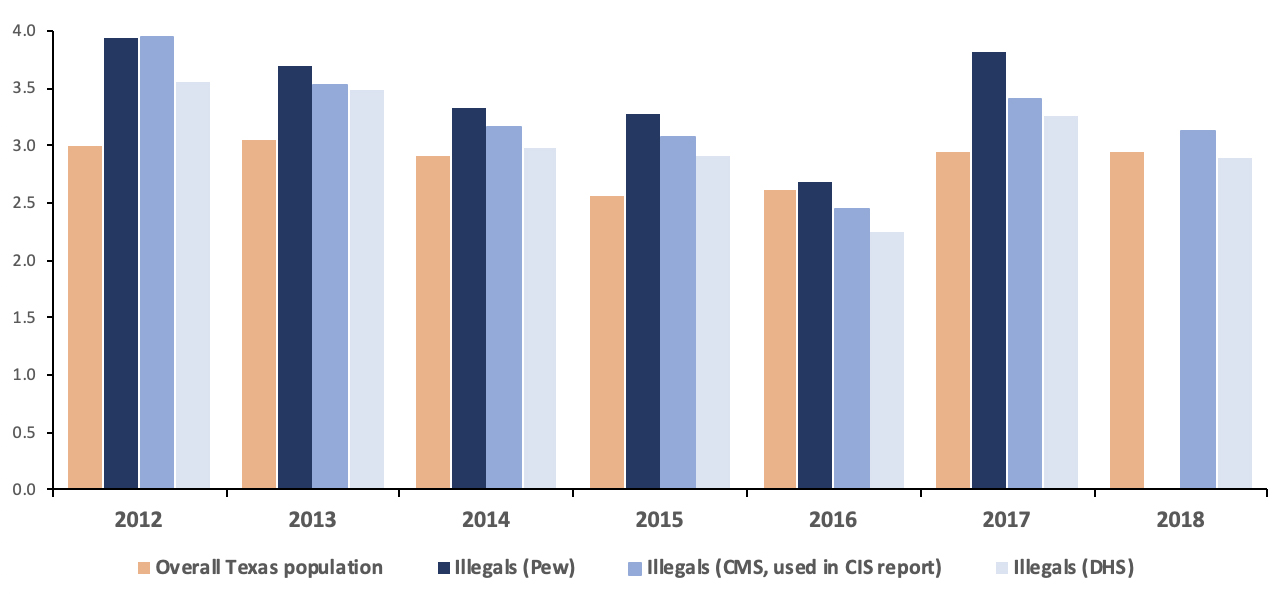Despite Border Surge, There Are Some Nay-Sayers in the Immigration System
Despite the massive arrivals of asylum seekers and others at our southern border and massive approval rates for some of them, there are still parts of the immigration system that say “no” a substantial part of the time. In this series of postings we will describe several of them.
My colleague Art Arthur, for example, reports that 95.8 percent of the otherwise illegal aliens who pre-schedule their entry through the CBP One app are given a green light by DHS officials. That’s a 4.2 percent denial rate.
In contrast, some older parts of the system continue to have substantially higher denial rates when dealing with other groups of would-be migrants.
Today’s posting deals with one such portion of the immigration system: the consular officers who issue — or do not issue — nonimmigrant (i.e., temporary) visas to people who would like to come to the U.S. in one of 83 different visa categories.
While the denial rate was relatively low for nonimmigrant visas overall in FY 2022, 15.7 percent, that was about four times as high as the 4.2 percent shown by Arthur for CBP One users.
Interestingly, 82 of the 83 visa categories had majorities of approvals over denials. Only one did not, which presumably reflected the marriage-related immigration fraud problem that we have reported on in the past. This in the super-obscure K-3 visa category; there were 16 applications in the class in FY 2022, and fully 11 of them were denied. (These are worldwide totals.)
What’s a K-3 visa, and how does it compare with the much more numerous K-1s? The main difference between the K1 and K3 visas is that a K1 visa is for a foreign partner who is not yet married to a U.S. citizen,, often called the “fiancé visa”; a K3 visa is for a spouse (already married) to a U.S. citizen.
For every 1,500 or so K-1 applications, there is one K-3. Being unusual may bring them more to much more scrutiny at the consular level and thus a higher percentage of denials.
Setting aside the K-3 rarity, we find that next highest denial level is among another relatively obscure category, F-2. These are spouses and children of F-1 foreign students, as the table that follows shows:
Ratio of Denials to Total Applications in
|
|||
| Nonimmigrant Category |
Total Applications |
Total Denials |
Denial Percentage |
| F-2, spouses of foreign students | 46,728 | 20,841 | 44.60% |
| F-1, foreign students | 631,807 | 220,676 | 36.60% |
| B-1/B-2, tourists | 4,063,202 | 835,003 | 20.50% |
| P-3, temporary visits by artists and entertainers | 6,585 | 1,291 | 19.60% |
| All nonimmigrants | 8,091,313 | 1,276,193 | 15.70% |
|
Source: Worldwide NIV Workload by Visa Category FY 2022, U.S. Department of State. Note: Data shown for leading denial categories among visas with more than 5,000 applications. |
|||
With foreign students having the next highest denial rate (at 36.6 percent) when the added variable (and problem area) is marriage, it makes sense that spouses of foreign students would have a higher denial rate than the students themselves. Most F-1s are not married. Again, the exceptions may get more attention than those in the mainstream.
Whereas students go to consular officers with pretty clear-cut advantages, such as a documented admission to an American college, self-starting artists and entertainers often have fuzzy credentials so their applications may be denied.
Regarding the tourist denial rates, it should be mentioned that these data are largely for nations that do not qualify for visa-less travel to the States. Were all tourists to be included, the denial rate would be much smaller.
Next: another group of decision-makers who can – and do – say “No.”






